The Tlingit (sometimes also known as the Łingít), meaning “people of the tides,” are Indigenous peoples of the Pacific Northwest Coast of North America, who define themselves as sharing a common cultural heritage
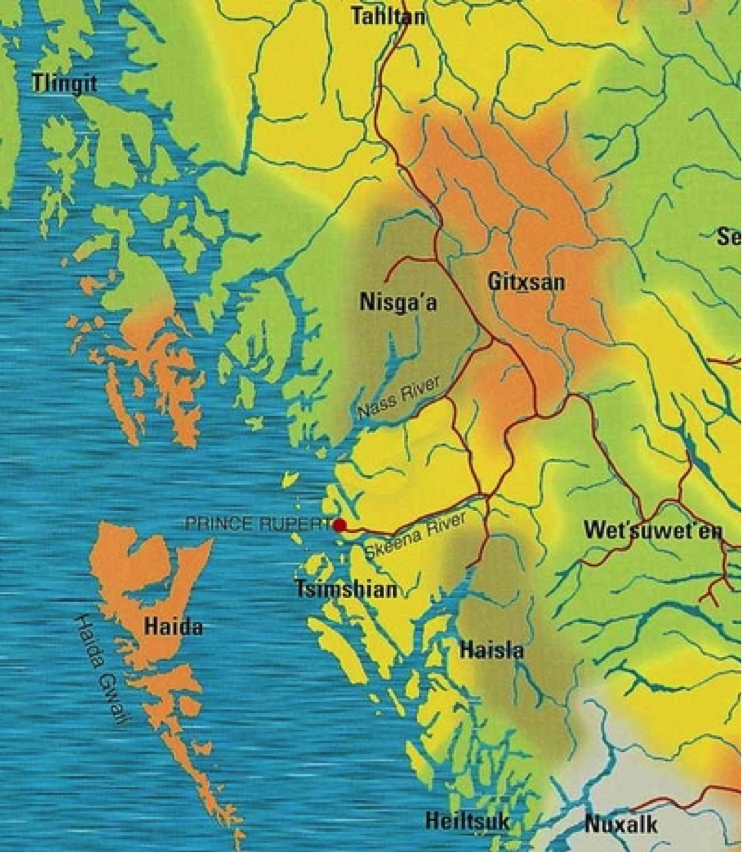
Tlingit territories are located in the Pacific Northwest and cover parts of present-day British Columbia, Yukon, and Alaska. While some Tlingit traditionally occupied areas along the coast, others made their homes further inland.
The clans of the Tlingit, for example, include Kùkhhittàn (Raven), Ishkìtàn (Frog), Yanyèdi (Wolf), Dèshitàn (Split Tail Beaver) and Dakhl’awèdi (Eagle)
Tlingit Art
Tlingit art is very beautiful and mostly uses two colours: Red and Black. These are based on the natural resources found in the area.
- Red – Comes from minerals in the soil
- Black – Comes from coal
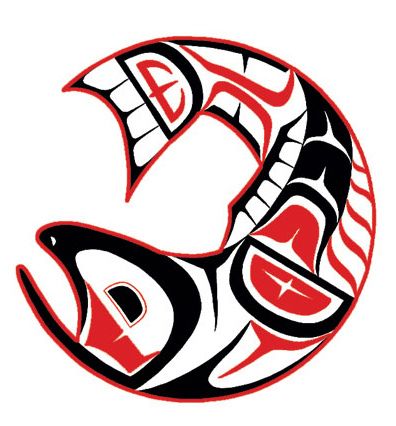
Tlingit art always begins with a rounded-corner rectangle. This symbols unity.

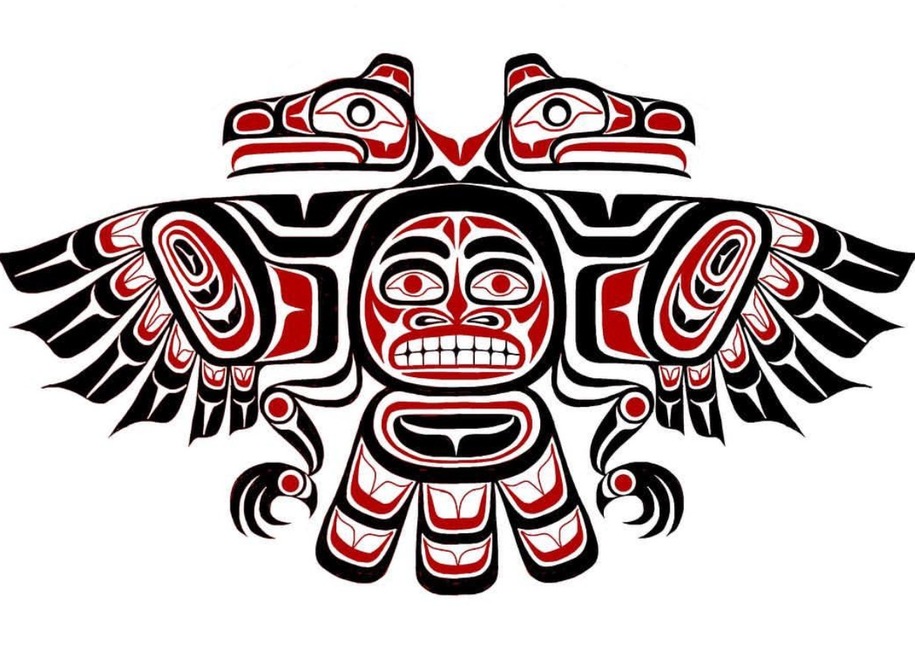
Totem Poles
Totem poles are monuments created by First Nations of the Pacific Northwest (Tlingit, Nisga’a, Haida, etc.) to represent and remember ancestry, histories, people, or events. Totem poles are typically created out of red cedar, which is found in the Great Bear Rainforest, and would be set up to be visible within a community.
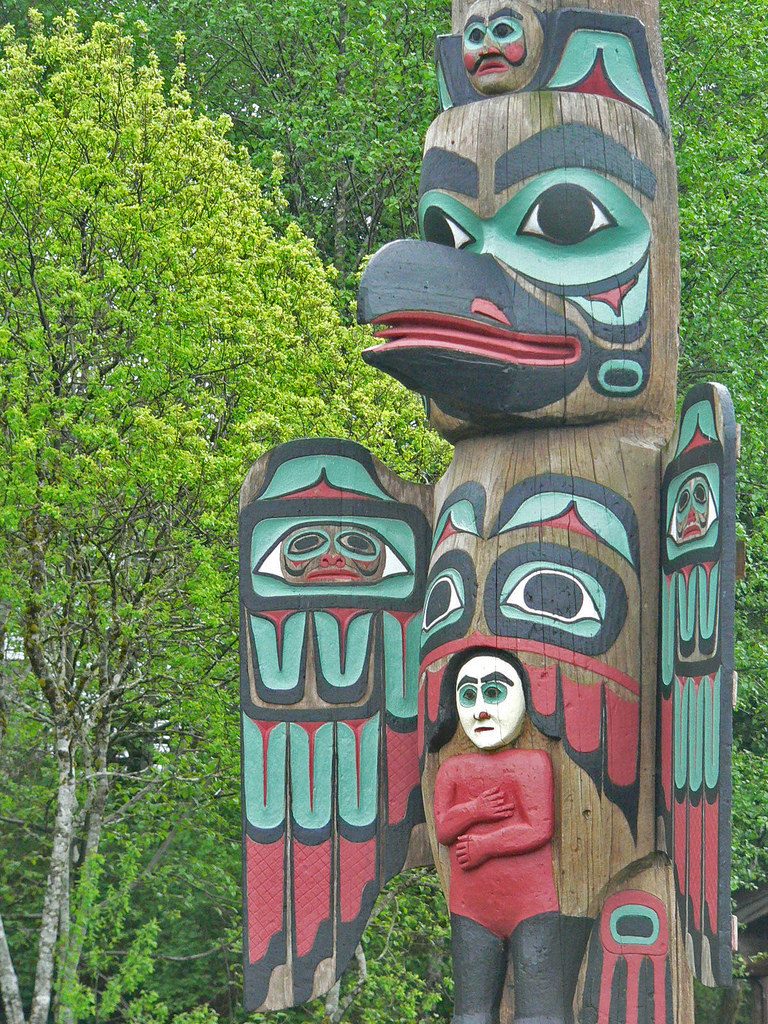
Most totem poles display beings, or crest animals, marking a family’s lineage and validating the powerful rights and privileges that the family held. Totem poles would not necessarily tell a story so much as it would serve to document stories and histories familiar to community members or particular family or clan members.
A totem pole typically features symbolic and stylized human, animal, and supernatural forms.
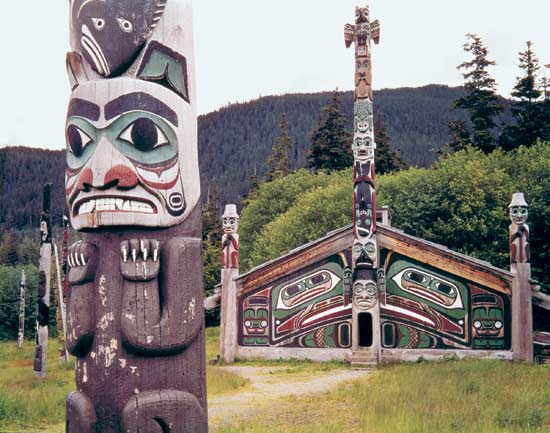
Comments by shaun pletsch